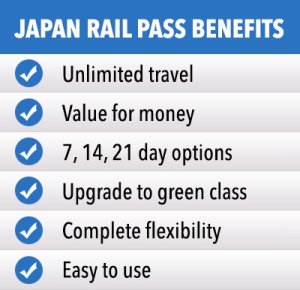Kamakura Travel Guide

 Overview
Overview
Less than an hour’s travel from Tokyo, the city of Kamakura is situated on the coast, and has various tourist destinations and attractions on offer. It is dubbed as the “Kyoto” of the east because of the many shrines, temples and other cultural and historical landmarks it has. And, because it is close to the water, it has many beaches that become packed with people once summertime begins.
 When To Go
When To Go
- Spring (March – May) in Kamakura is a great time to take advantage of the numerous cherry blossom viewing spots and the weather is very pleasant
- During summer (June – August), the beaches of the city come alive, as visitors from other cities and countries come by to have fun under the sun
- In autumn (September – November), the leaves begin to change colour in September, so parks and gardens welcome crowds who want to enjoy the beauty of the foliage
- In winter (December – February), temperature ranges from 3 to 16 degrees Celsius, and the weather is generally dry and sunny. The city’s tourist attractions are not so crowded at this time, so it is a good season for those who are not keen on fighting through crowds or enduring long queues.

View of the city and beach

Gardens
 Things To See
Things To See
Visit the Great Buddha statue
The Kamakura Daibutsu, or the Great Buddha of Kamakura, is an enormous Amida Buddha statue that is made of bronze. At over 13 metres high, this statue is the second tallest of its kind in the country (the tallest is the Buddha at Todai-ji Temple in Nara) and watches over the Kotokuin Temple grounds.
Check out the temples
- Hasedera Temple – Known for its statue of the Jodo sect’s Goddess of Mercy, Kannon, the Hasedera Temple sits on a hill and has ponds and a nice garden.
- Hokokuji Temple – A Zen Buddhist temple of the Rinzai Sect, the Hokokuji is a small temple with a thick bamboo forest behind its main hall.
- Kenchoji Temple – The oldest and ranked number one among the five great Zen temples of Kamakura, Kenchoji was founded in 1253. It consists of many subtemples and temple buildings.
- Engakuji Temple – Recognised as the second greatest Zen temple of Kamakura, the Engakuji houses a wooden Shaka Buddha statue, a large bell, and a lush garden that is a popular autumn foliage viewing spot.
- Meigetsuin Temple – Founded in 1160, the Meigetsuin is a Rinzai Sect Zen temple with a distinct circular window offering a view of the garden at the back.
- Jomyoji Temple – Ranked number five among Kamakura’s five great Zen temples, the Jomyoji used to be a vast complex with many pagodas and seven buildings. But due to fire, it now only has the main hall, main gate, warehouse, and reception hall.
- Ankokuronji Temple – A Buddhist Nichiren sect temple, the Ankokuronji is situated in a wooded area on a hill, offering a fantastic view of Kamakura. Be warned – it is a bit of hike to get there but the view makes it all worthwhile.
Hike
Kamakura is bordered by ocean and a hilly area cloaked with dense forest. Visitors may choose among three types of trail to hike through the woods, depending on the time you have available and your energy levels:
- Gionyama Hiking Course – takes around 30 minutes to complete
- Daibutsu Hiking Course – takes between 60 and 90 minutes to complete
- Tenen Hiking Course – takes approximately 60 to 90 minutes to complete
Go to the beach
The beaches of Kamakura boast fine sand, so they are quite a popular one-day or weekend getaway destination for tourists looking to escape the adjacent busy cities of Yokohama and Tokyo in the summer. Swimming, surfing, and sunbathing are popular activities.

Surugaoka Hachiman Shrine

Moss Stairs
 Where To Explore
Where To Explore
- Enoshima – An island just a short train ride away from Kamakura, Enoshima is a destination that has numerous attractions to offer tourists. It has an observation tower, park, shrine and the Iwaya Caves.
- Komachi-dori – This street is lined with over 250 restaurants, cafes, Japanese-style sweet cafes, boutiques and shops for souvenirs and shops that represent the ancient city. It is great to explore this street and the little side streets that branch off from it.
 Getting Around
Getting Around
Kamakura has an electric railway service that connects the three main tourist areas of the city. It also has city buses that stop at the top attractions. And, because it is not that big, renting a bike or walking to explore the town is a feasible option.












